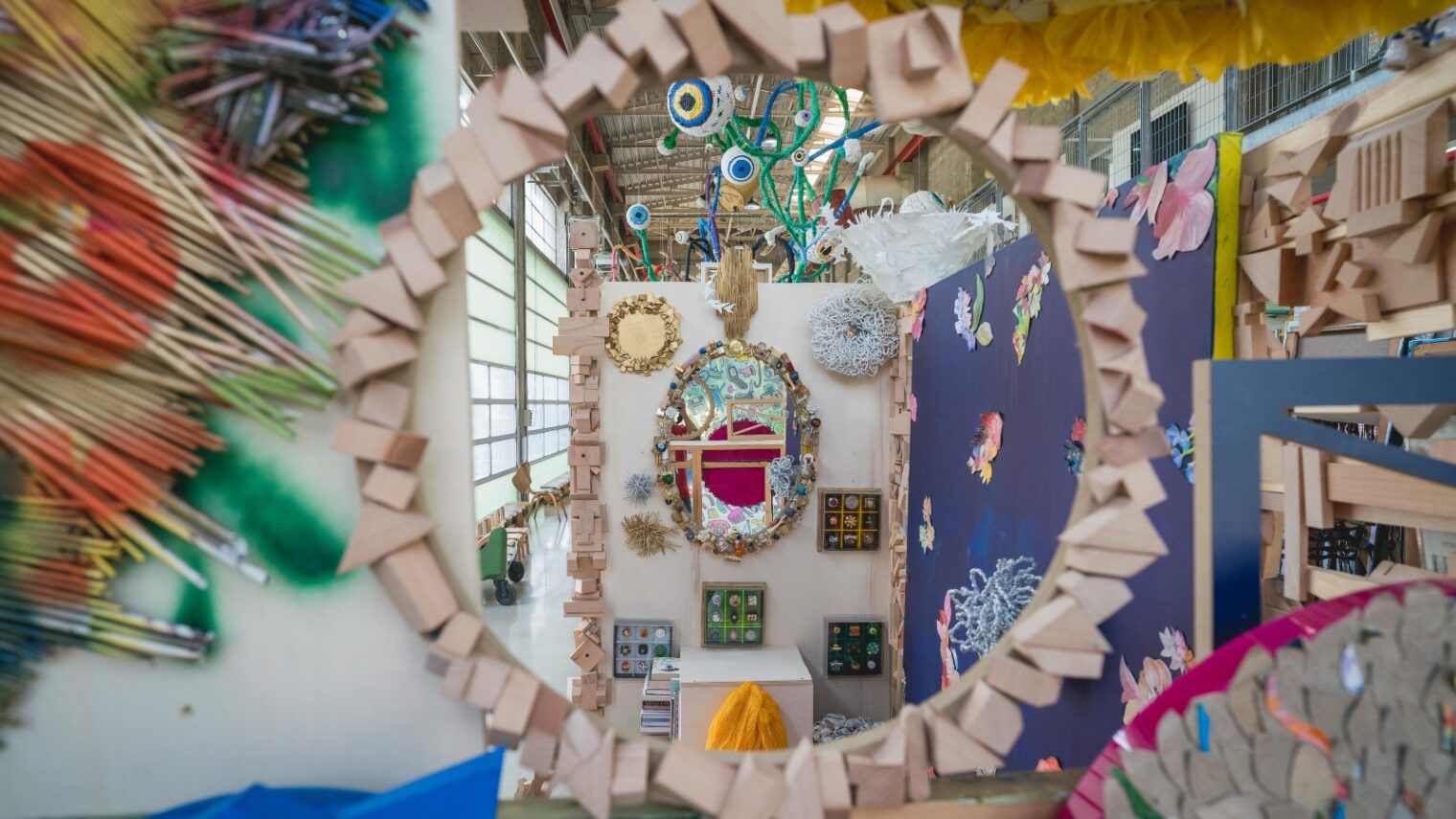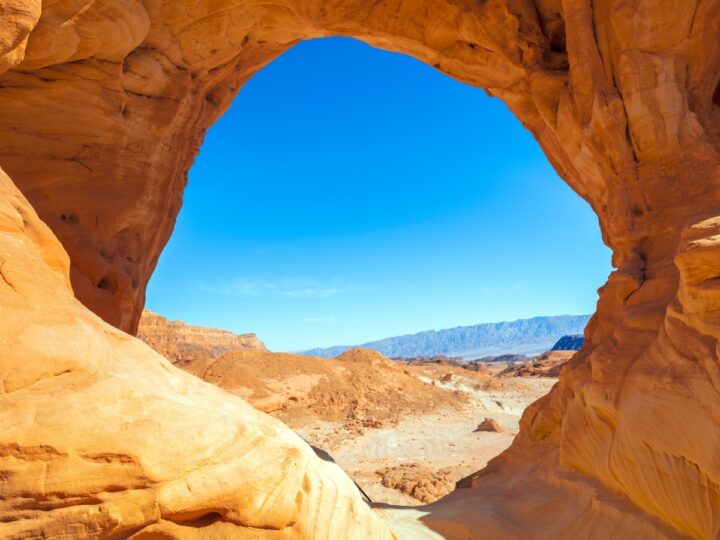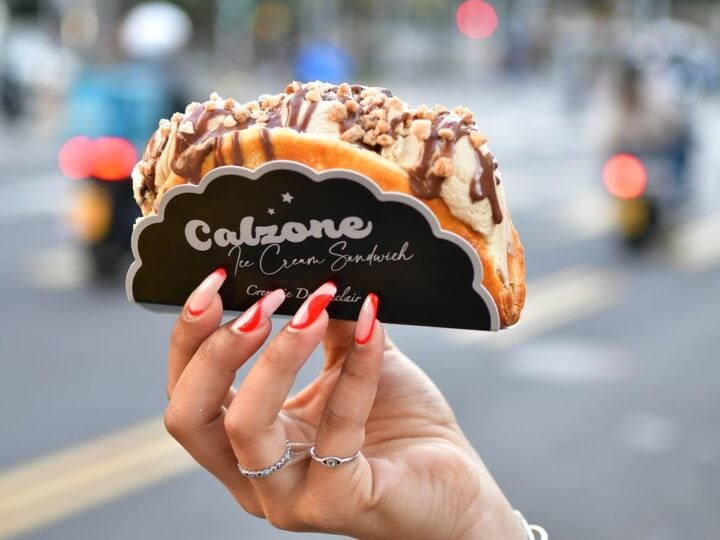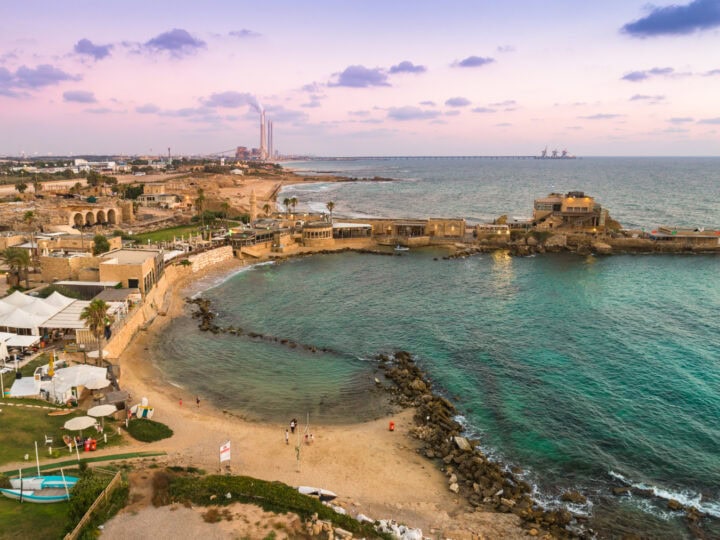The expression “One person’s trash is another person’s treasure” comes to life in a new art exhibit at Hiriya Recycling Park in Or Yehuda, east of Tel Aviv.
Hiriya is a former garbage dump that was transformed into an industrial park housing a variety of state-of-the-art facilities for treating municipal trash, with areas for the public to learn about how our garbage impacts the environment.
Inside Hiriya’s Center for Environmental Education are two new exhibitions: artist Gil Yefman’s “Out of Sight” and artist Suly Bornstein Wolff’s “Second Chance.”
“Out of Sight,” open through September 2023, is an impressive ceiling installation created by Yefman and members of the public by knitting together hundreds of thousands of discarded plastic bags in various colors.
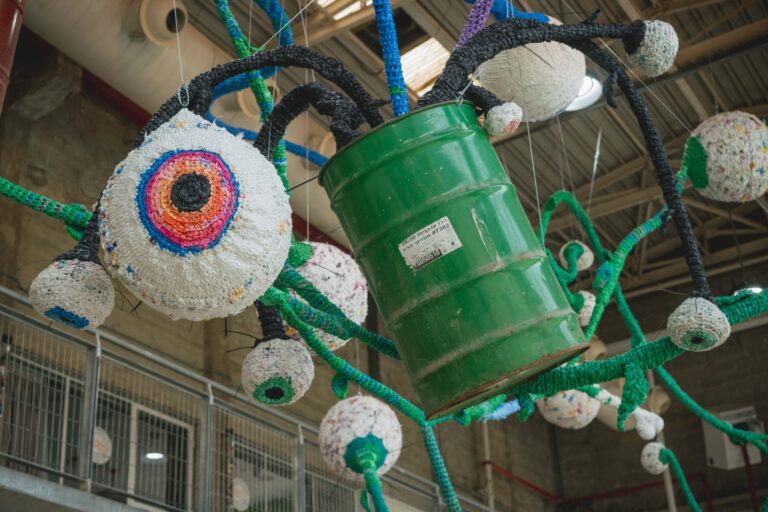
Partners who worked with Yefman on the 400-square-meter display included teachers, students and women’s communities in the north and center of the country.
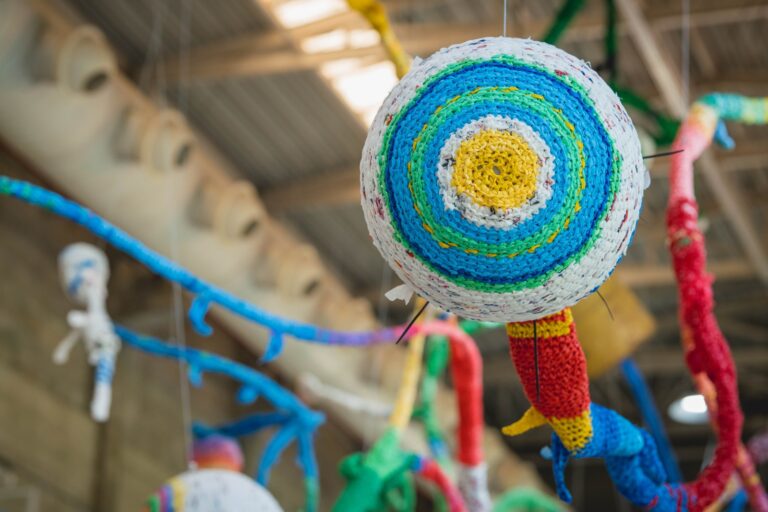
Yefman, an award-winning artist and graduate of Jerusalem’s Bezalel Institute of Art and Design, says the exhibit “asks us to open our eyes and linger in the experience of observing a delicate fantasy that hides within it a drama of bones, fangs and organs integrated into stems and turning into veins surrounded by large eyes that do not let go, thus asking us, the viewers, to see our excessive consumerism and its effect on the environment.”
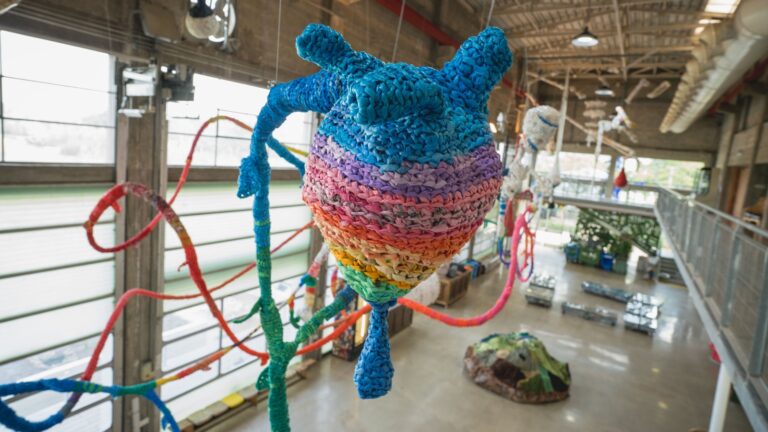
“Second Chance,” curated by Adi Yekutieli, is a model of the artist’s own house, containing hundreds of paintings, sculptures and objects that Wolff created from throwaway items she collected — such as empty perfume sample bottles from drugstores, worn capes from hairdressers, and flea-market finds.
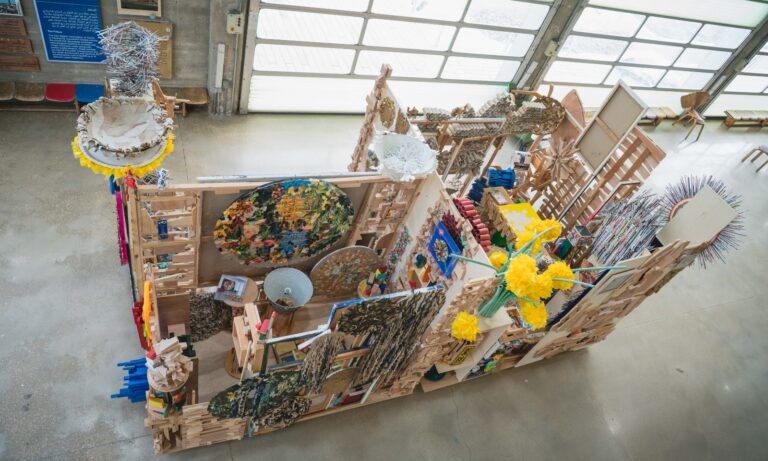
One of the pieces is a chandelier, reminiscent of a wedding cake, made of broken dinnerware and faux crystals.
Wolff says this chandelier was fashioned like a similar fixture that hung in the dining room of her childhood home in Brazil.
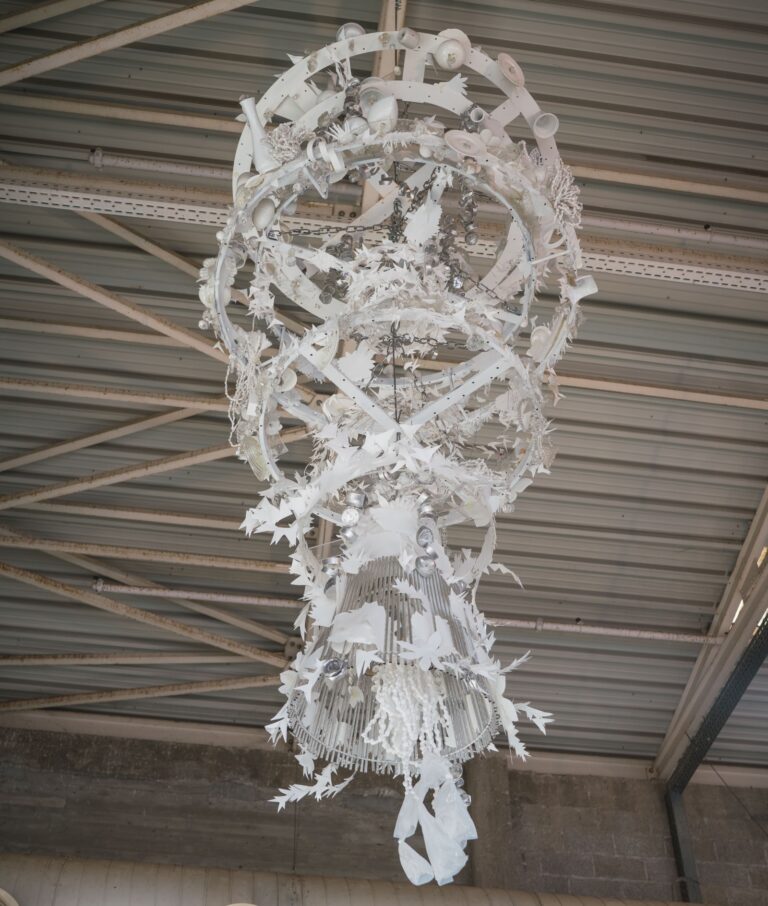
But there’s a darker side: It symbolizes her mother’s stories of her experiences during Kristallnacht (Night of Broken Glass) perpetrated against Jewish shops and synagogues in Germany and Austria in November 1938.
“The contrast of sweet childhood memory and the event that marked the Jewish people’s destruction meet in a third place and a new connotation, the Center for Environmental Education in Hiriya,” she says.
“From the white, aesthetic, and seemingly innocent chandelier stems the fragility and quick escalation of ecological disasters that endanger our future.”
“Second Chance” is on display through February 28.
Opening hours for both exhibits: Sunday through Thursday, 11am to 3pm. Free of charge with pre-registration here.




